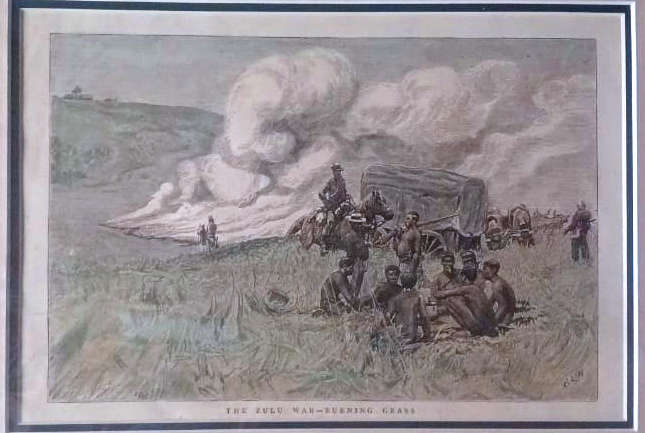Hand coloured woodcut from the Illustrated London News, 1879, original, woodcut is 23 cms x 16 cms, double mount is 38 cms x 30 cms, condition: very good.
The Anglo-Zulu War was fought from January to early July 1879 between forces of the British Empire and the Zulu Kingdom. Two famous battles of the war were the Zulu victory at Isandlwana and the British defence at Rorke's Drift.
Following the passing of the British North America Act of 1867 forming a federation in Canada, Lord Carnarvon thought that a similar political effort, coupled with military campaigns, might lead to a ruling white minority over a black majority in South Africa. This would yield a large pool of cheap labour for the British sugar plantations and mines, and was intended to bring the African Kingdoms, tribal areas, and Boer republics into South Africa.
In 1874, Sir Bartle Frere was sent to South Africa as High Commissioner for the British Empire to effect such plans. Among the obstacles were the armed independent states of the South African Republic and the Kingdom of Zululand.
Frere, on his own initiative, sent a provocative ultimatum on 11 December 1878 to Zulu King Cetshwayo. Upon its rejection, he ordered Lord Chelmsford to invade Zululand. The war had several particularly bloody battles, including an opening victory of the Zulu at the Battle of Isandlwana, followed by the defence of Rorke's Drift by a small British Garrison from an attack by a large Zulu force. However, the British eventually gained the upper hand at Kambula, before taking the Zulu capital of Ulundi. The British eventually won the war, ending Zulu dominance of the region. The British made the Zulu Kingdom a protectorate and later annexed it by the British Empire in 1887.
But the war did shatter prior colonial notions of British invincibility, due to their massive early defeats. Together with famines, diplomatic misadventures, and other unpopular wars overseas, it may have contributed to the ejection of the Disraeli government from office in 1880, after only one term.

